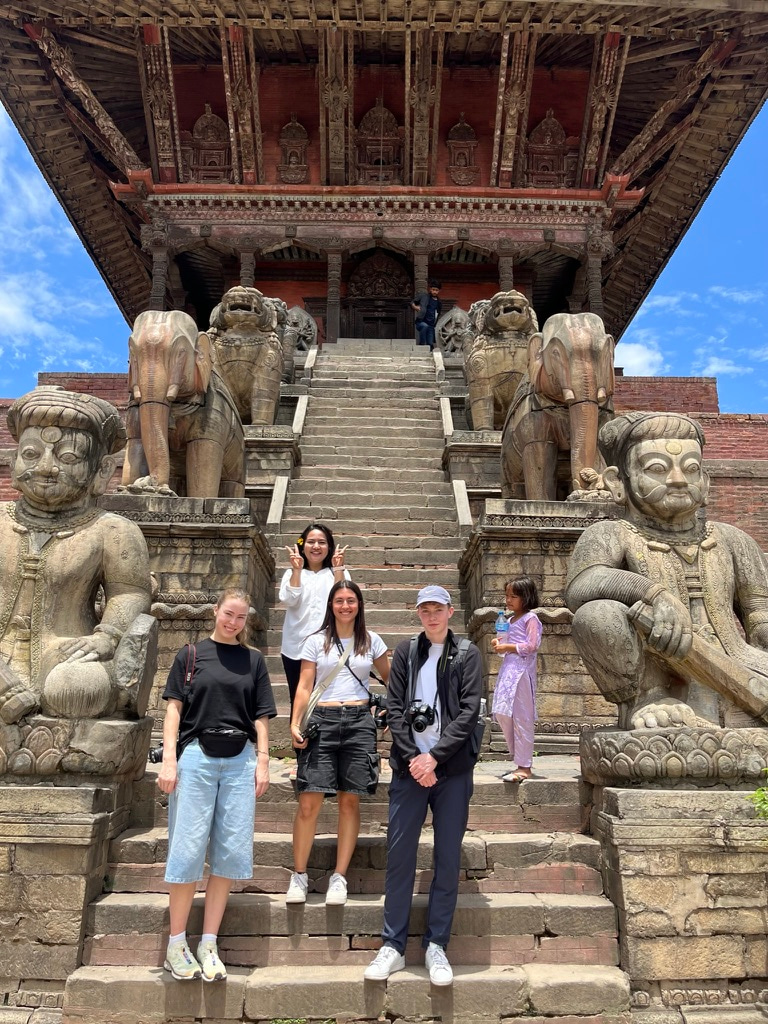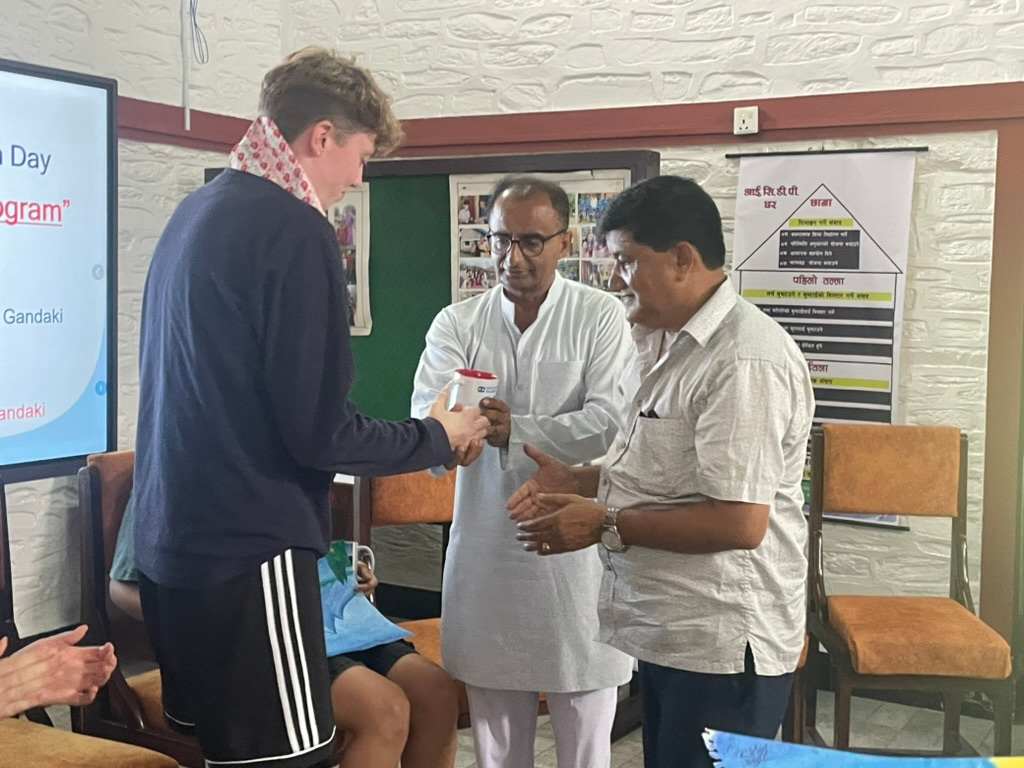Dhanyabād, Nepal!
I spent the past four weeks from the end of July until the end of August in various places around Nepal participating in the central LiA project “Making Impact Visible” in cooperation with SOS Children’s Villages Switzerland and Nepal.
When I say I do not know where to begin, I really mean it. So much happened, so many incredible things were going on at the same time, and, therefore, I thought I would give a chronological account and start from the beginning.
My journey started on the evening of the 26th of July in Frankfurt, Germany. Taking a red-eye, I found myself waking up in New Delhi from where it was only another hour on the second plane to Kathmandu Tribhuvan International Airport. There, I was picked up by one of the drivers of SOS Children’s Village Sanothimi, who would become a very friendly face and someone I will remember forever (like most of the people I have met here, but more about that later).
FIRST STOP: KATHMANDU
We spent the first ten days at the SOS Children’s Village in Kathmandu's Bhaktapur District, further referred to as SOS Sanothimi, which was the first ever SOS project in Nepal, established in 1972.
(For more details, please follow the link: https://www.sosnepal.org.np/where-we-work/sos-children-s-village-sanothimi)
Our job was “Making Impact Visible." Therefore, we were interviewing different people, including staff members, children from the village, and participants from the other projects around Kathmandu, and took photos of everything going on in the village.
We got a detailed insight into the functioning of not only the projects in and around Kathmandu and were able to meet so many people involved but also got an insight into the structure and functioning of such a big and international organisation as well as the National Office of Nepal.
Someone I would like to specifically mention here and say thank you to one more time is Elisha, the communications manager of SOS Children’s Villages Nepal, who did not only work with us in Kathmandu but also travelled to our next stop with us.

SECOND STOP: POKHARA
Now, whoever has talked to me about my summer, probably already knows that Pokhara was probably my favourite stop on our tour. Big shout out to Pradeep and his team for the hospitality and the unbelievable food. Here, we were also joined by Chris Cullen from the Laidlaw Team at UCL.
In this location, we visited two different Children’s Villages: SOS Children’s Village Gandaki and SOS Children’s Village Pokhara. In Gandaki, we also interviewed the children, specifically focussing on the childclub in Gandaki, which organises weekend and summer vacation activities for the children in the village. We also visited the on-site training centre for families from SOS’s Family Strengthening Programme, which taught mothers from the participating families to support themselves by learning how to sew and tailor.
The second village, SOS Children’s Village Pokhara, was very interesting, as that village caters specifically to the Tibetan refugee community, which, due to its geographical proximity, is biggest in Nepal and India. There, not only every child who lives in the village but also everyone who works in the village is a member of the Tibetan refugee community in Nepal, and some, such as the head of the village Lobsang, have grown up in the village themselves. It was interesting to get to know more people from yet another culture that I had never encountered before and to see in which ways Nepali and Tibetan culture were similar due to the geographical proximity and in which aspects they were completely different. For example, the Nepali national dish is considered to be dumplings called Mo:Mo, but they are actually originally from Tibet!

THIRD AND FOURTH STOPS: ITAHARI AND LAHAN
While Kathmandu and Phokara had been places that were regularly visited by tourists as well, we already noticed that this would not be the case in Itahari and Lahan when we went to the airport in Kathmandu to fly to Biratnagar. This was because every single person we encountered told us that that is not a place where tourists go and that we booked the wrong flights. Biratnagar is situated nine km from the northern border of India, and as soon as we landed, we understood why people could not believe we were going as “outsiders.” We were greeted by 97% air humidity and 36 degrees Celsius, that according to the weather report, felt like 46 degrees Celsius.
The region was very different from the hilly regions and the Himalayan foothills we had been spending our time in before, but as soon as we entered the SOS Children’s Village Itahari, we encountered the same phenomenon as in the other regions. While the villages all look different, they all have the same feeling of peacefulness and quietness to them.
In the Children’s Village in Itahari, we conducted similar work as in the villages before and spent a big chunk of our time interviewing children, although this time we also put a larger focus on the caregivers, in accordance with the content briefing.
On our last day at the SOS Children’s Village Itahari, we got to take part in the celebrations of the festival Raksha Bandhan, which is celebrated in India and southern Nepal and which honours the bond between siblings, specifically the bond between a brother and a sister. This was a great experience, and the gesture of inviting us to join was quite moving.
We then moved on to Lahan. There is no Children’s Village in Lahan, and SOS Children’s Villages has only recently started to implement their Family Strengthening Programme in that region. When comparing it to the communities we had experienced in which the Family Strengthening Programme had been implemented for a couple of years, a stark difference was noticeable, e.g., many children were not in school or had just started to return to the school with the on-set of the programme.
CONCLUDING THOUGHTS
Everywhere we went, we experienced a warm welcome. We attended an official welcome dinner with the team at each of our locations and had some fun evenings getting to know the people behind the projects. Nepal is the most colourful, friendly, and welcoming place I have been to so far, and the country and its people will definitely have a special place in my heart. I am hoping to return many times throughout my life, and I hope that one of those times is in the near future.





Please sign in
If you are a registered user on Laidlaw Scholars Network, please sign in